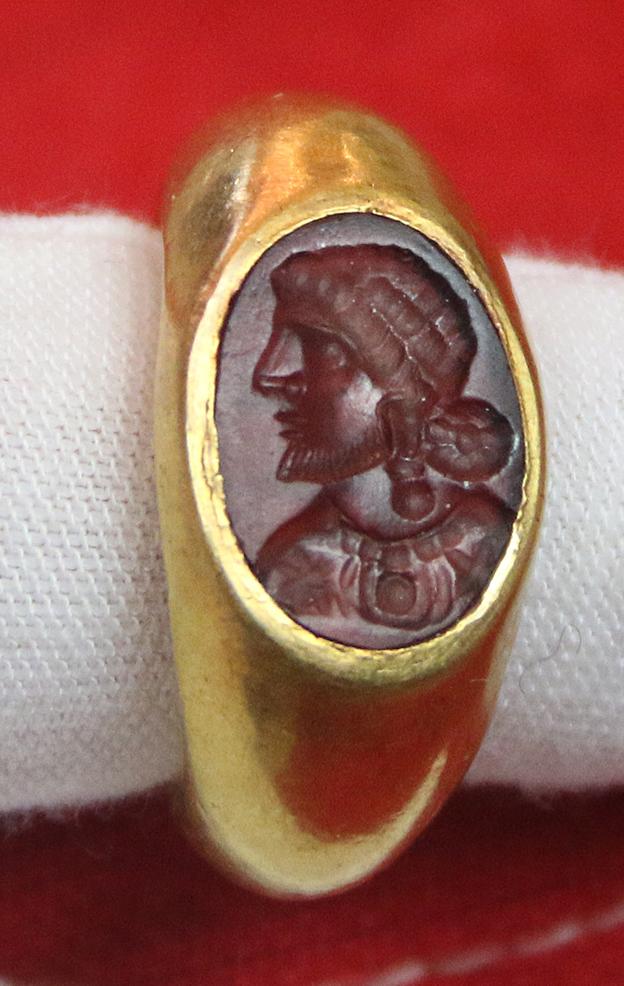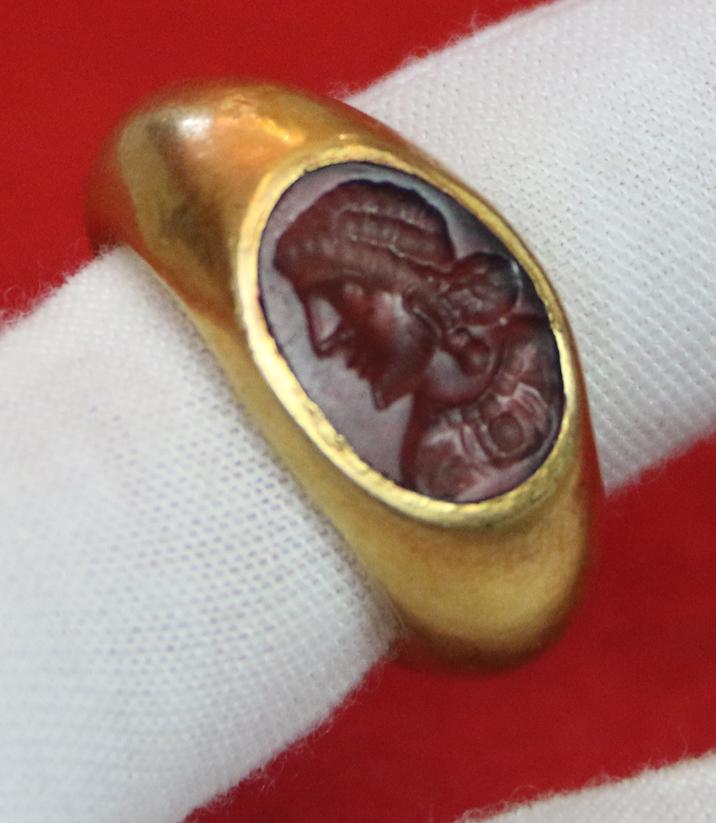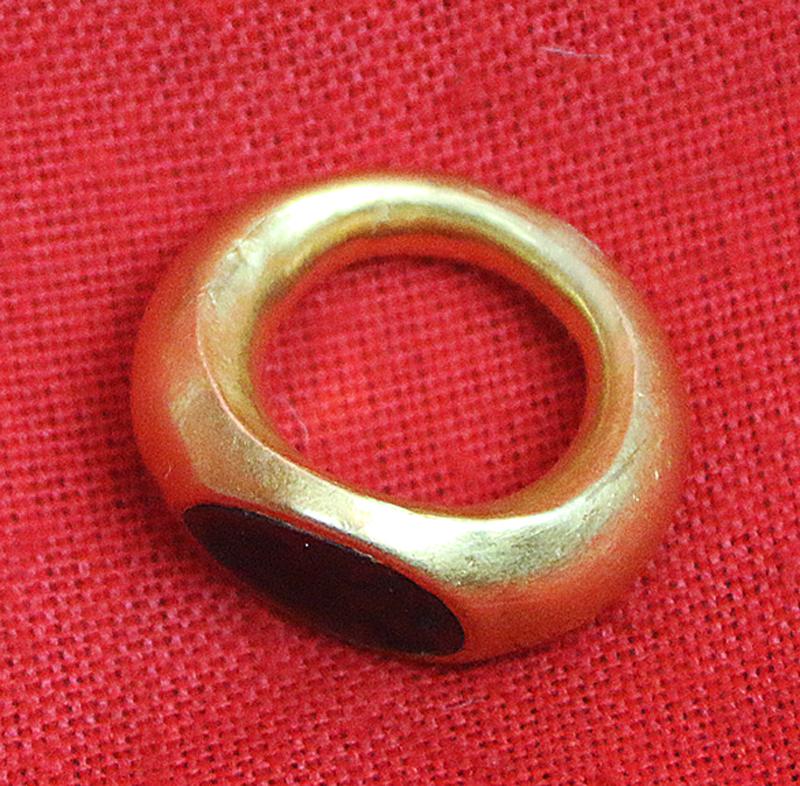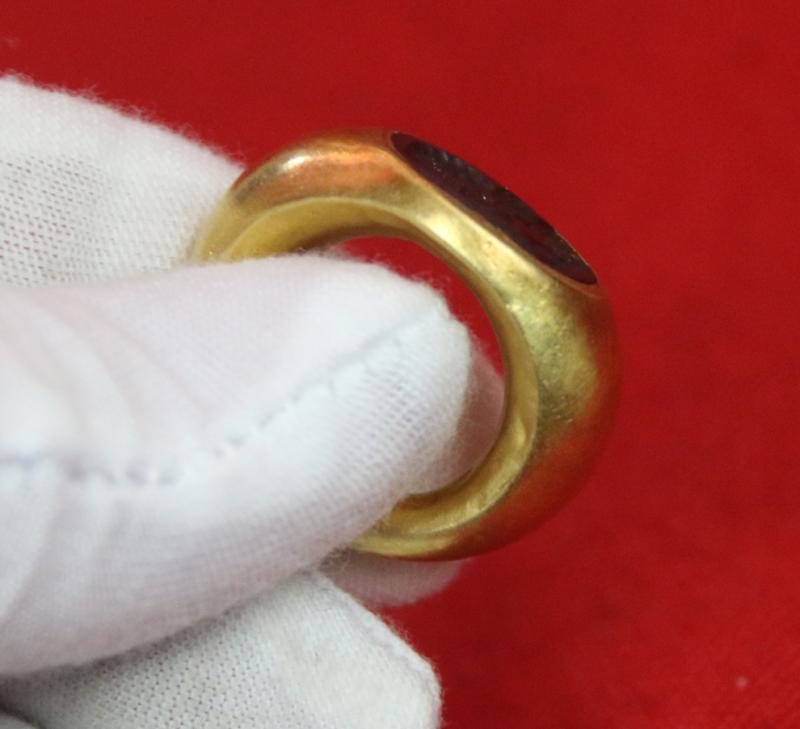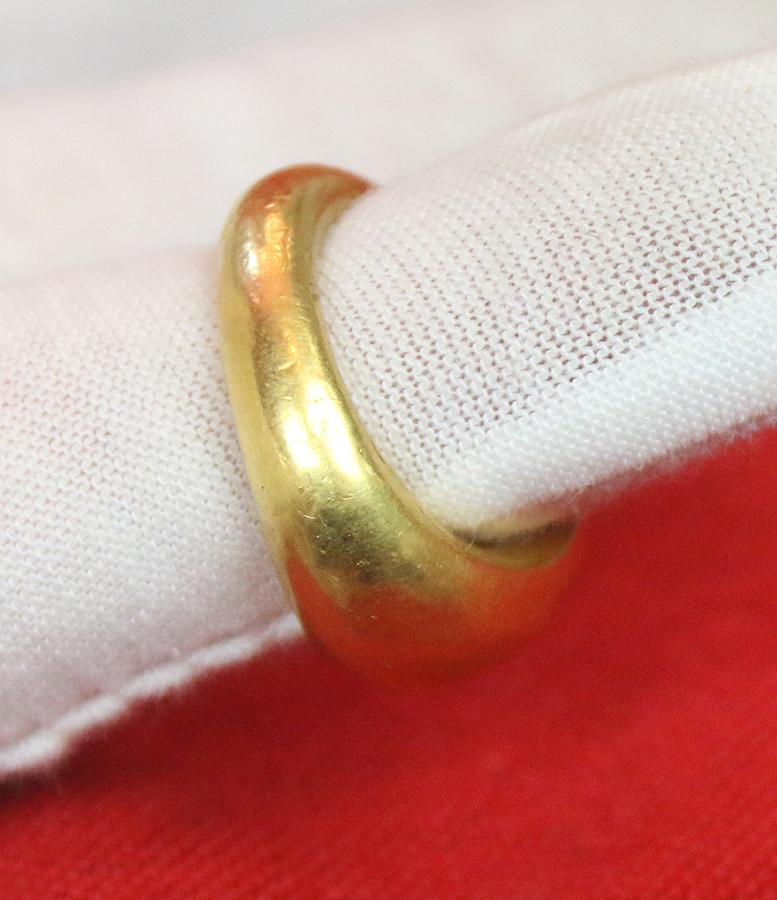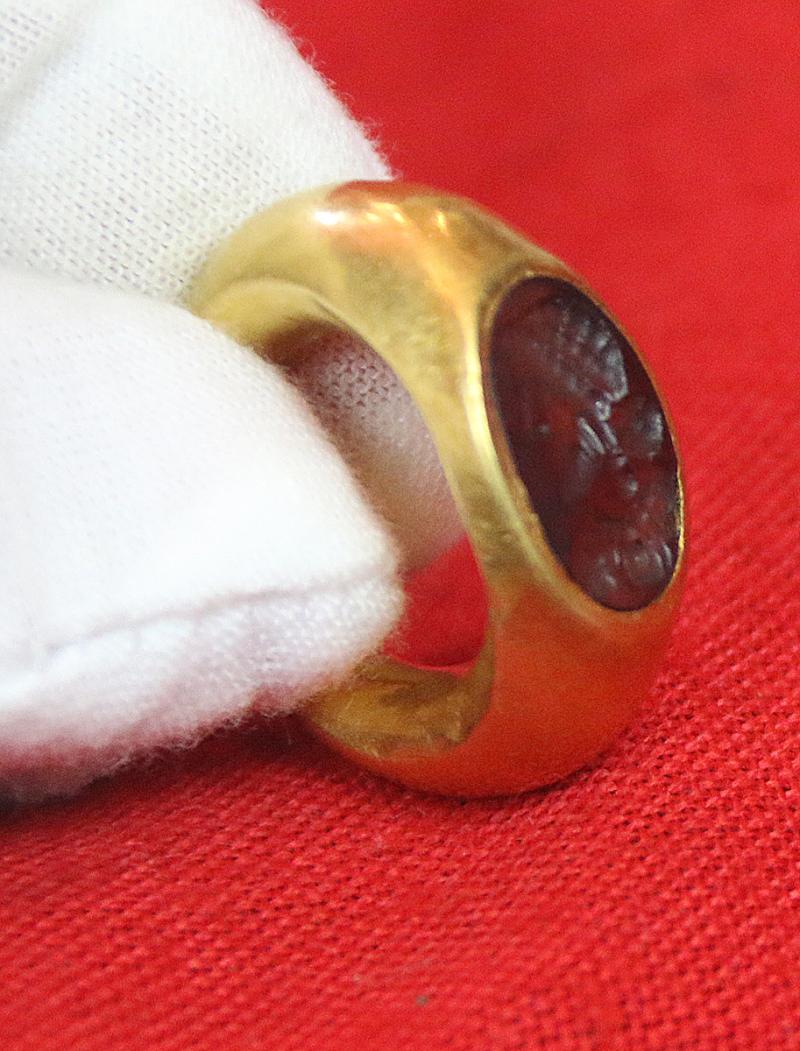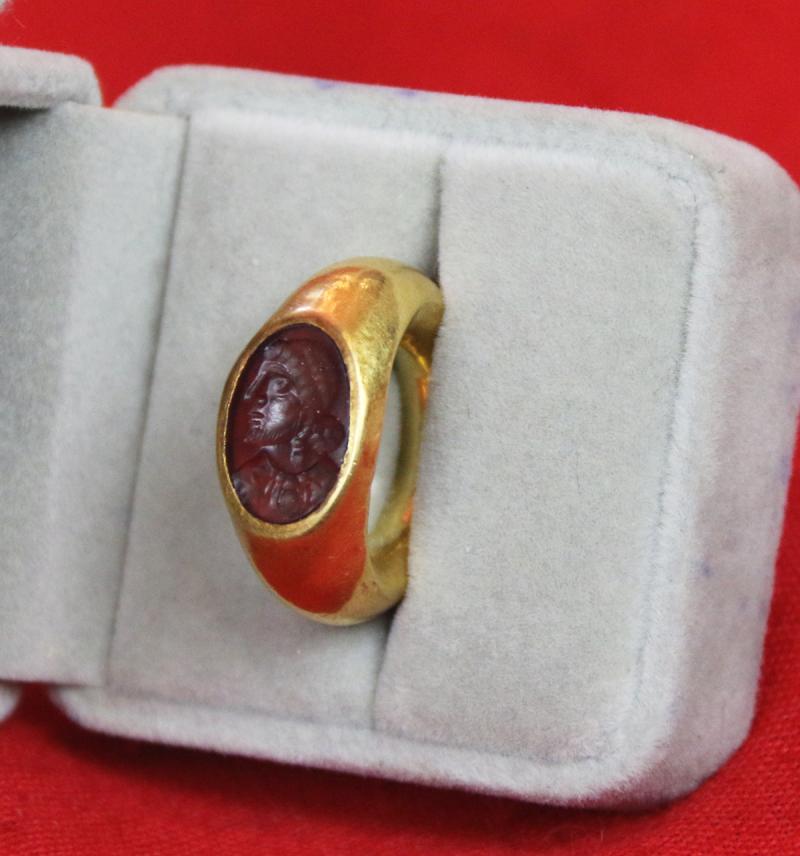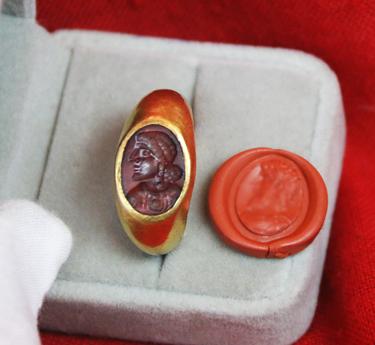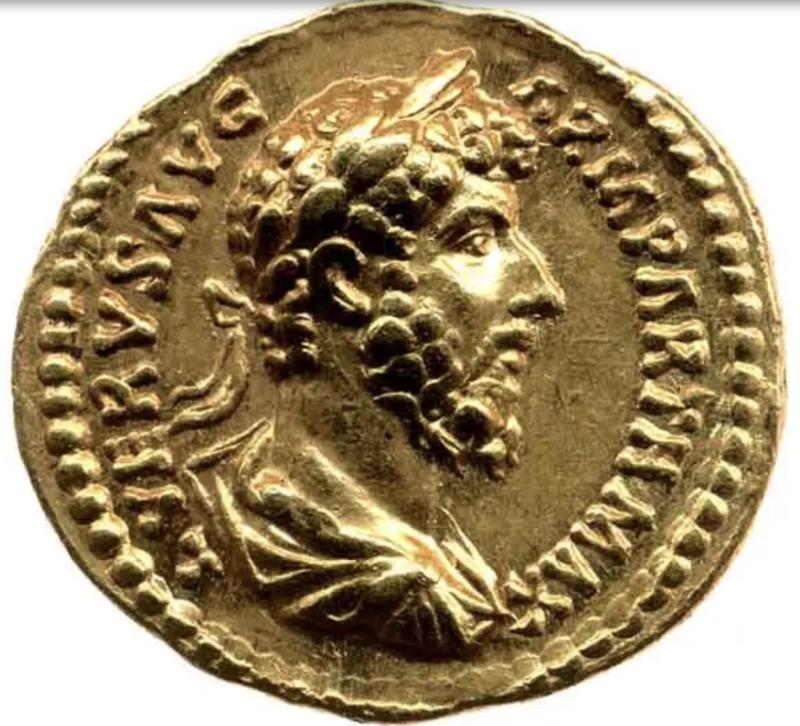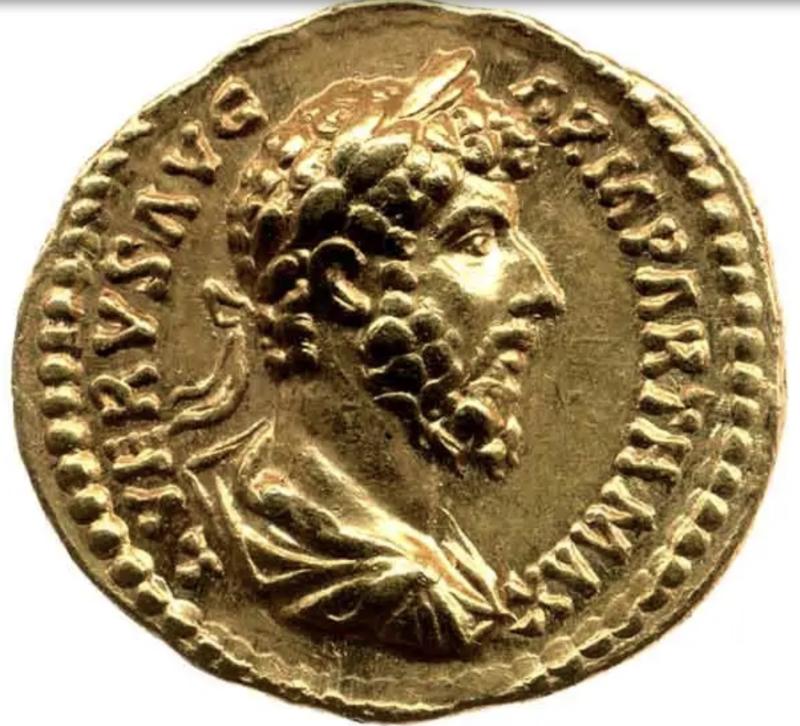A Simply Stunning Ancient Roman Museum Grade Fine Gold Seal Ring with Intaglio Portrait Engraved Garnet Gem Stone 2nd to 3rd Century A.D. Likely a Depiction of an Emperor Such As Hadrian, Marcus Aurelius, Lucius Verus, or Even A Parthian Vassal King.
A museum grade, around 1900 year old pure gold ancient Roman intaglio carved garnet gemstone seal ring.
Worn by such a noble as the rank of Imperial Legate { Legatus Augusti pro praetore}. The commander of two or more legions, who also served as the governor of an eastern province in which the legions he commanded were stationed. He was of Senatorial rank and was appointed by the Emperor for a term of 3 or 4 years.
The carved gem’s seal is depicting a profile hand carving, possibly of an Emperor such as Verus, or vassal King of Parthia. Possibly as a celebration of Verus’s ‘Triumph’ from the Parthian War. Classified by the seminal classification of ancient ring forms, by Dr. Martin Henig, as Ancient Roman, Henig type II
The Roman triumph was one of ancient Rome’s most important civic and sacred institutions. These spectacular processions were celebrations of Rome’s military victories, the courage of its soldiers, and the favour of the gods. They were also one of the highest honors a Roman man could achieve: designated a triumphator, he was awarded a grand procession through the imperial capital. The lavish parade of prisoners and captured treasures was sure to guarantee the eternal fame of the conquering general. Over time, the triumph became an important tool in the manipulation of Roman politics.
Made and worn by the highest ranking Roman, such as a Legate, possibly even a member of the Imperial household at the time from Emperors Marcus Aurelias, Lucius Verus, & Commodus, and just into the early following century.
Rings were one of the most popular pieces of jewellery in Roman culture. Under the Republic the wearing of gold rings was exclusively reserved to certain classes of persons or for specific occasions. In the late 3rd century BC only senators and knights equo publico had this privilege. Towards the end of the Republic, gold rings were also bestowed on civilians. Under the Roman Empire gold rings, although still regarded as a privilege and awarded as a military distinction
During the era of dual Emperors Marcus Aurelius, and Lucius Verus, 161 to 180 ad, the last part of his reign was dramatically represented in the blockbuster film 'Gladiator', starring Richard Harris as the Emperor Marcus Aurelias. He acceded to the throne of Emperor alongside his adoptive brother, who reigned under the name Lucius Verus. Under his rule the Roman Empire witnessed heavy military conflict. In the East, the Romans fought successfully with a revitalised Parthian Empire and the rebel Kingdom of Armenia. Marcus defeated the Marcomanni, Quadi, and Sarmatian Iazyges in the Marcomannic Wars; however, these and other Germanic peoples began to represent a troubling reality for the Empire. Ultimately, the Romans were victorious in the Parthian War of 161-167 CE. After the sacking of Ctesiphon and Seleucia, Lucius Verus took the title Parthicus Maximus. As a feature of his imperial titulature, the epithet conveyed his military might and power. But the question remains: to what extent can the Roman victory over the Parthian Empire be attributed to Verus?
Indeed, much of the successes the Romans enjoyed in this eastern war surely belong to the supremely able retinue of generals and administrators who were with Verus at the time. Regardless, upon his return from the campaign, Verus was awarded a triumph, the traditional celebration of Roman military conquest that had been used since the Republican era. This was to be the high point of Verus’ imperial story, however. In 169 CE, as he was journeying back from the Danubian frontier — where he had been fighting in the Marcomannic wars with Marcus Aurelius — Verus suddenly fell ill and died. It is highly probable, according to historians, that Verus was a victim of the pestilence that his soldiers had carried back to the empire with them from the Parthian War.
Commodus. the successor and son of Emperor Antoninus Pius,, was the Roman emperor who ruled from 177 to 192. He served jointly with his father Marcus Aurelius from 177 until the latter's death in 180, and thereafter he reigned alone until his assassination. His reign is commonly thought of as marking the end of a golden period of peace in the history of the Roman Empire, known as the Pax Romana.
Commodus became the youngest emperor and consul up to that point, at the age of 16. Throughout his reign, Commodus entrusted the management of affairs to his palace chamberlain and praetorian prefects, named Saoterus, Perennis and Cleander.
Commodus's assassination in 192, by a wrestler in the bath, marked the end of the Nerva–Antonine dynasty. He was succeeded by Pertinax, the first emperor in the tumultuous Year of the Five Emperors.
Jewellery in the Roman Republic
The core ideologies of the Roman Republic, centred around moderation and restraint, meant that elaborate jewellery was relatively unpopular until the transformation to imperial rule. The law of the Twelve Tables in the 5th century BC, limited the amount of gold which might have been buried with the dead. The Lex Oppia, 3rd century BC, fixed at half of an ounce the amount of gold which a Roman lady might have worn. During the Roman Empire, however, jewellery became a public display of wealth and power for the elite.
Rings of the higher ranks were often embellished with intaglios, cameos and precious gemstones. Mythology and Roman history were used as a repertoire of decorative themes. Roman rings featuring carved gemstones, such as carnelian, garnet or chalcedony, were often engraved with the depiction of deities, allegories and zoomorphic creatures.
1 inch across, UK size H1/2, {measured on the round inside the oval} 9.6 grams, approx 22 carat gold 91.16% Gold, 6.66% silver, 1.93% copper, which is a typical consistency of ancient Roman gold determined by x-ray flourescence analysis with Oxford Instruments in 2017
As with all our items it comes complete with our certificate of authenticity.
Code: 24779
8950.00 GBP

